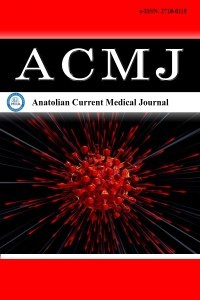1.
Nations U. World Contraceptive Use 2022 and Estimates andProjections of Family Planning Indicators 2022. Department ofEconomic and Social Affairs, Division P.
2.
Gordts S, Campo R, Puttemans P, Gordts S. Clinical factorsdetermining pregnancy outcome after microsurgical tubalreanastomosis. Fertil Steril 2009; 92: 1198-202.
3.
Elci G, Elci E, Sayan S, Hanligil E. Is there any differencebetween pregnancy results after tubal reanastamosis performedlaparotomically, laparoscopically, and robotically? Asian JEndosc Surg 2022; 15: 261-9.
4.
Gomel V, McComb PF. Microsurgery for tubal infertility. JReprod Med 2006; 51: 177-84.
5.
van Seeters JAH, Chua SJ, Mol BWJ, Koks CAM. Tubalanastomosis after previous sterilization: a systematic review.Hum Reprod Update 2017; 23: 358-70.
6.
Hirshfeld-Cytron J, Winter J. Laparoscopic tubal reanastomosisversus in vitro fertilization: cost-based decision analysis. Am JObstet Gynecol 2013; 209: 56.e1-6.
7.
Messinger LB, Alford CE, Csokmay JM, Henne MB, MumfordSL, Segars JH, et al. Cost and efficacy comparison of in vitrofertilization and tubal anastomosis for women after tubal ligation.Fertil Steril 2015; 104: 32-8.
8.
van de Water M, Bosteels J, De Sutter P, Weyers S. Laparoscopicnon-microsurgical tubal reanastomosis: A retrospective cohortstudy. Eur J Contracept Reprod Health Care 2015; 20: 193-200.
9.
Boeckxstaens A, Devroey P, Collins J, Tournaye H. Gettingpregnant after tubal sterilization: surgical reversal or IVF? HumReprod 2007; 22: 2660-4.
10.
Godin PA, Syrios K, Rege G, Demir S, Charitidou E, Wery O.Laparoscopic reversal of tubal sterilization; a retrospective studyover 135 cases. Front Surg 2018; 5: 79.

